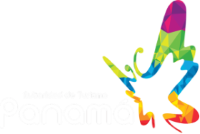About Panama
Panama is a country of Central America located on the Isthmus of Panama, the narrow bridge of land that connects North and South America.
In the 16th century, when the Spaniards came to the isthmus, it was occupied by Kuna (Guna), Guaymí, Chocó, and other American Indian groups. The population soon included persons of mixed Spanish and Indian ancestry, termed mestizos. During colonial times people from Africa were brought to the isthmus as slaves, and still other mixed ethnic types developed as the Africans were incorporated into the society.
During the 19th century, with the construction of the Panama City–Colón railroad, new groups arrived—North Americans (primarily from the United States), French, and Chinese. Large numbers of West Indians (mainly from British Barbados and Jamaica, as well as Martinique) came to Panama as labourers during the construction of the canal, and additional U.S. nationals, Spaniards, Italians, and Greeks also arrived.
Panama has a tropical climate that supports a rich, diverse ecological systems, and has over 500 rivers and streams, many natural harbors, mountains and lush forests, a variety of indigenous people groups, and the world changing Panama Canal, which was built from 1904 to 1914 to link the Pacific and Atlantic Oceans for trade.
Spanish is the official language of Panama and is spoken by the vast majority of the people. Although fewer than one-tenth of the people speak American Indian languages, all of Panama’s Indian groups preserve their native tongues, and many Indians also speak Spanish. Most Panamanians from West Indian backgrounds speak English, which is also commonly taught in schools.
Today, Panama enjoys a peaceful, prospering existence as it has become the top tourism destination in Central America as well as a place where many North Americans and Europeans are retiring because of its economic prosperity, political stability, comfortable weather and peaceful environment.


